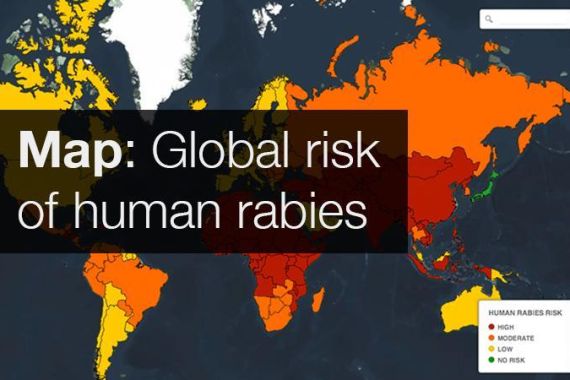
Rabies: The danger zones
Around 60,000 people die from rabies each year, but which countries have the highest and lowest risk?
Rabies, a zoonotic viral disease transmitted from animals to humans, continues to be a threat in more than 150 countries across most continents.
According to the World Health Organization (WHO), around 60,000 people die from rabies each year, and around 95 percent of those cases occur in African and Asian countries.
Keep reading
list of 4 itemsWoman, seeking loan, wheels corpse into Brazilian bank
UK set to ban tobacco sales for a ‘smoke-free’ generation. Will it work?
Poland lawmakers take steps towards liberalising abortion laws
This map shows rabies-endemic countries with varying levels of risk, as well as those where the disease has been supposedly eliminated but a small level of risk remains. While the danger zones appear to be in Asia and Africa, there are a few exceptions – in Japan and New Zealand there is almost zero risk of contracting rabies while Cuba, Honduras, Dominican Republic, Haiti, El Salvador and Guatemala have the highest risk within the Americas.
Rabies virus persists because it can be transmitted not just from stray dogs, as commonly believed, but other pets as well, especially in high-risk rural areas with little access to effective vaccines. And there are countries where vaccination of pet dogs and cats takes place on a regular basis, yet they face a moderate risk of rabies being transmitted from wild animals.
Lifelines: The Quest for Global Health explores the steps being taken in the Philippines for the prevention and eventual eradication of rabies from the islands.
Lifelines: The Quest for Global Health will air on Al Jazeera in 2014.
Follow Jacopo Ottaviani on Twitter: @jackottaviani